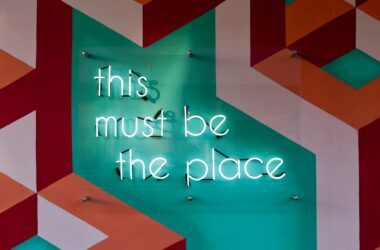The onboarding process for a SaaS company is welcoming into your world of possibilities. Users, whether they are customers or employees, should feel comfortable and catered to as soon as they step in, making them want to stay longer and return again in the future.
It sounds like a tall order, but with SaaS onboarding software, this is in fact easy. Effective onboarding processes can increase customer retention by 50%. So, skipping the software may save you some pennies but will cost you prospects, growth, and success.
Stay tuned to learn all about SaaS onboarding software, including what it is exactly, why it is important, and what tools are best for your business to be successful.
What is SaaS onboarding software?
New users of Software as a Service (SaaS) products go through an introductory process known as onboarding which guides them through the initial steps of using any SaaS product.
This educates them on what it can do and how it can help them, making the product adoption into day-to-day life much smoother.
Without SaaS onboarding software, it becomes much harder to convince potential new users that what you’re selling is worth their time and money.
There is no strict rulebook on what SaaS onboarding software looks like, just as long as it makes the journey smooth and results in user activation. We will cover some of the best SaaS onboarding tools later.
Why SaaS onboarding software is important
Surely if your product is high-quality and solves multiple customer pain points, there is no need for onboarding software to do the convincing for you. It is reasonable to think this, especially as a naive startup in the SaaS industry.
But, if you forgo onboarding software, it won’t take long to recognize just how far behind you are in terms of customer retention and overall growth compared to competitors that use it.
So, let’s break down the areas in which SaaS onboarding software is so important.
User engagement
Starting off strong, an effective SaaS onboarding process ensures that users quickly see the value of your product. The smoother the initiation is, the more likely they will be to adopt the product and its full capability into their life, leading to an increase in customer success, loyalty, and retention.
Reduced churn
The churn rate is the percentage of customers or active users who stop using a product within a specific time frame.
With an optimized onboarding process, a positive first impression is made and carried on throughout the customer journey with responsive support, clear walkthroughs, and consistent product improvements. This results in reduced churn as customers continue to use your SaaS products while feeling confident that they can trust you.
Saves time and money
SaaS onboarding software saves time and money for both the business and the customer. This is because onboarding software automates many features to make it cheaper, more efficient, and less resource-intensive.
As well as this, 55% of users returned a product because they didn’t understand how to use it. So, by providing efficient knowledge of the product from the beginning, the likelihood of refunds will dwindle.
Scalability
It’s every SaaS business’ goal to grow by acquiring more customers and keeping them happy for years to come. Of course, this brings many great things to the company, but it also makes it much harder to manually handle the onboarding process and deliver consistent results.
However, with the proper software, there are no limits to what can be achieved. To ensure seamless growth, it’s best to implement this software sooner rather than later.
Personalization
Creating a personal experience for customers will make your company memorable. It demonstrates the worth you see in each individual who comes your way and ensures that only relevant information is used to educate and inspire them.
Personalizing the onboarding process to suit each user’s unique needs and preferences creates a much higher likelihood that they will resonate with your product and envision it as part of their lives.
Data-driven improvements
Another aspect of SaaS onboarding software that makes them important is their analytics and tracking capabilities. This data is presented comprehensively and can then be analyzed to find issues in the onboarding process where potential customers abandoned the journey.
Competitive advantage
Finally, as we mentioned, implementing the right SaaS onboarding software for your business will create a huge advantage over competitors.
This is because those that prioritize their customers demonstrate a commitment to customer service and, therefore, positively impact their brand perception and overall reputation.
Key features of effective SaaS onboarding software
Now that we know what makes SaaS onboarding software so important, it is time to investigate how it achieves such incredible business results.
It is a competitive market out there, so knowing what key features to look for will also ensure you are on a level playing field with the best of the best.
User onboarding flow
One of the most important aspects of an effective SaaS onboarding software is a structured, guided onboarding flow that creates a natural step-by-step process through stages such as:
- Welcome message
- Account setup
- Guided tour
- Setting configuration
- Interactive tutorials
This whole procedure is the first impression and must flow with minimal issues. Just one minor obstacle could be enough for someone to change their mind and go to a competitor instead.
Personalization
As we said, customers need a personalized experience when going through a SaaS onboarding process. The most effective types of software consider this and can adapt based on user interactions and feedback.
For example, suppose a user finds a specific feature or function difficult to grasp. In that case, onboarding software will flag this and provide additional help or resources to help the user better understand it.
In-app guidance and tips
In-app guidance and tips offer real-time assistance to users exactly when they need it. This saves them from rummaging around to find answers to specific issues and allows them to quickly move on to the next stage.
As you can imagine, readily available prompt guidance and tips remove the risk of frustration, which quickly snowballs into a negative view of the company. With bitesize instructions and tips directly within the application, it takes a fraction of the time to get through the onboarding process.
Interactivity and walkthroughs
One of the best ways to learn something is to get hands-on and see how it works instead of simply imagining it.
Interactive elements such as video tutorials and walkthroughs actively engage the users with the software. This improves their confidence and understanding of what to expect when officially implementing it into their workflow.
Walkthroughs are crucial in onboarding for providing a structured path for users to experience the software’s user interface and product features. Tutorials such as this can be separated into smaller sections, with each one exploiting specific use cases and functions of the SaaS product.
With the added component of interactivity, users from all knowledge levels can rewind, repeat, or ask further questions to ensure they are given the same learning opportunities as everyone else.
Knowledge base
This brings us to our next key feature, a knowledge base where relevant information about the SaaS product is stored, easily accessed, and navigated by those needing it.
This reduces the need for customer support which frees up your team to focus on other duties and makes it easier and less daunting for new customers to find the answers to their questions – no matter how simple or complex.
As well as onboarding information about the product, knowledge bases must include training resources to help new users hit the ground running.
Data insights
To measure how effective your onboarding software is, data insights that track user progress, engagement, and conversion rates are a very important feature.
With this understanding, companies can see what works and what doesn’t, which can be used to tweak the customer journey to meet user needs and expectations.
It is up to the company to regularly analyze this data and user feedback to keep on top of the required improvements. Then, once changes have been made can assess in real-time how their work pays off.
Customer relationship management (CRM) integration
Finally, we must mention customer relationship management (CRM) as another key feature of any effective SaaS onboarding software. CRM helps manage customer interactions with a business, and integrating it with SaaS software makes for the ultimate toolkit for success.
CRM integration allows businesses to sync user data, interactions, and preferences with onboarding software and creates a customer information hub.
Types of SaaS onboarding
Depending on your audience, SaaS onboarding processes can vary. Here are some of the most common types.
Customer onboarding
Customer onboarding software is designed to help onboard and engage new customers. It guides customers through adopting a new product or service, ensuring a smooth and successful journey right from the beginning.
Customer onboarding is more than just selling a SaaS product or service, though; it needs to sell the company’s image as being trustworthy, reliable, and innovative so that customers come back for future needs.
Employee onboarding
This type of onboarding software focuses on the training and integration of new team members into an organization.
Its main aim is to help HR teams and managers manage the numerous tasks and activities required for successfully onboarding new hires. This makes the entire process much smoother and more engaging for both parties compared to manual onboarding.
Product onboarding
Product onboarding is designed for new customers to adopt a specific software product. It begins with the initial setup before familiarizing them with new features and ensuring they get the most value from the product from the get-go.
Self-serve onboarding
As the name suggests, self-serve onboarding enables users to complete the onboarding process themselves when utilizing a new SaaS product without human guidance.
By following the self-service procedure, users can set up their accounts, personalize their settings, and begin using the product however they like without feeling rushed.
Walkthrough software
This onboarding software creates interactive and guided walkthroughs or product tours for users navigating a new SaaS product. In some respects, walkthrough software is a combination of onboarding solutions we have covered, as it can be used to train employees, educate customers, and sell products.
Choosing the right SaaS onboarding software for your business
Selecting the right SaaS onboarding software for your business is no easy task – but a very important decision to make all the same. It can greatly impact the user onboarding experience of your employees, customers, and overall success as a company.
To make things a little bit easier, here are some key considerations to remember when choosing the right SaaS onboarding software.
Meets your needs
The first thing SaaS companies must consider is that the onboarding software meets their needs, but before this – they need to have a clear idea of what those needs even are.
Factors such as industry, target audience, company size, and product all play a big part in how customers will be introduced into the journey.
By identifying these specific requirements, companies can choose an onboarding software that can meet those requirements at a bare minimum.
As well as this, understanding these needs helps avoid paying for unnecessary features that not only waste money but also bloats the whole system, making it less efficient and harder to learn how to use.
Trial period options
By offering a trial period, businesses can see first-hand how suitable their chosen onboarding software is at meeting their needs. This interaction makes the user interface, usability, and overall real-world experience much easier to gauge compared to only understanding it in theory.
Even though it is within a trial period, there is usually no limit to how many features you can test with real onboarding needs. Once it has been thoroughly tried out with various onboarding tasks, a decision to continue through to a full purchase or not is made.
User-friendly interface
The software you choose must have a user-friendly interface, as it saves time trying to navigate through features. A clear, attractive, easy-to-understand layout is also much easier for new employees to learn. Here are some more indicators of a user-friendly interface:
- Responsive design: The interface should react quickly when interacting with links, buttons, and videos. Visual elements also make an interface interactive by reacting with slight color changes or movements.
- Simple layout: A bombardment of information can easily be overwhelming. Be keeping things simple; learning to navigate through the interface takes less time to understand.
- Readable text: Text should be clear with appropriate size, font, and placement. It makes it accessible for those with all visual abilities and more engaging.
As well as employees, customers must be able to navigate the software with as much ease as possible. A clunky, unappealing user interface can immediately turn people off, reducing your chances of successfully onboarding new customers.
Customization options
In addition to customers who need a customizable experience, businesses benefit equally from them.
The best onboarding software allows companies to tailor their process to unique needs and branding rules such as visual elements, language, and mission. This consistency is important as it ensures the brand is cohesive over multiple platforms and creates a trustworthy image for customers.
The onboarding flow can also be optimized through customization based on user feedback and data analytics tools. This enables product teams to fix specific user pain points and streamline user interactions.
Integration capabilities
It is paramount that organizations check whether the new onboarding software they have chosen can integrate with existing tools and systems. This includes CRM, HR software, and other digital adoption platforms that take care of the onboarding process to avoid issues such as lost or duplicated information.
It is definitely worth proper integration as it enhances data security and allows businesses to optimize their onboarding workflow even more through automated data transfer and data entry. When done right, this ability reduces the risk of errors and impracticality.
Mobile accessibility
Data shows that mobile traffic share has reached over 54% compared to desktop computers. This demonstrates just how vital it is that mobile accessibility is focused on just as much as desktop.
Employees and customers using your onboarding materials should be able to access what they need even when on the go. This makes current users happy and extends the onboarding process to a wider audience, including those who favor mobile phones over desktops, resulting in higher user retention rates.
Security and privacy
It is all too common for security to be a fleeting thought when adopting new software. Still, it is crucial, especially when dealing with sensitive employee and customer information.
Security measures protect user data and private information during onboarding, with businesses fully confident that their data is safe from unauthorized access and hackers.
By implementing security measures, all those using the onboarding software will feel more confident and trusting in the business. It will help maintain a positive reputation and brand image. Users could only take one security breach to turn their back on you forever.
Customer support
Even if the onboarding software is straightforward and easy to navigate, it is unrealistic to expect every user to complete the process without any problems whatsoever. Having responsive customer support helps address questions or technical issues users may experience.
With prompt, friendly, and, most importantly, helpful customer support accessible around the clock, there is an increase in user satisfaction. This is because they feel valued and thus more likely to have a positive perception of the software and the business as a whole.
Best SaaS onboarding tools
Depending on your target audience, you should carefully consider what SaaS user onboarding tool you use. Here are some of the best that each have unique qualities to meet your needs.
Mixpanel is used to track user engagement, making it an excellent tool to measure how effective your onboarding strategy is. By analyzing these metrics, businesses have the information necessary to tweak aspects of the user experience to make the most of their SaaS software.
Here are the other reasons Mixpanel is such a good SaaS onboarding tool:
- Event tracking: Mixpanel allows businesses to track specific events throughout onboarding. This could be sign-ups, form submissions, and other important actions that lead to successful onboarding.
- Funnel analysis: This feature makes your user journey much easier to understand by representing it visually and comprehensively. By demonstrating the funnel in such a way, areas, where users abandon the onboarding flow become clear and easier to fix.
- User segmentation: This is when a user base is divided into groups based on attributes such as device type and user behavior. Your onboarding experience can be personalized and optimized to cater to these groups to make it more relevant.
See Mixpanel’s pricing plan below:
Appcues focuses on product onboarding and offers various features to make an engaging, seamless experience for everyone involved. This onboarding platform promises to get users to their ‘aha’ moment faster, which is when they first realize how valuable your product is. From there, onboarding is considerably easier.
Here are some notable features from Appcues to help with SaaS onboarding:
- In-app flows: Appcues give you the power to create interactive and personalized in-app user experiences by using widgets, tooltips, and templates; the onboarding process is optimized to be user-friendly while guiding them through key features.
- Events explorer: If there is a particular feature you are proud of or a user interaction event, you can track it with Appcue. It’s easy for things to go amiss, so making the most of every opportunity will give you a huge advantage over competitors.
- Onboarding checklists: Gamification increases the time users spend on a website by 28%. By using Appcues’ checklist feature, users can see how many steps they have completed and how many they have left to do. This motivates them to continue with the process by keeping them engaged.
See Appcue’s pricing plan below:
Pendo is designed for product experience to help SaaS businesses understand and guide user behavior within their apps. The platform is primarily used for product analytics and user engagement and is a great onboarding tool.
Let’s have a further look into what makes Pendo so useful for SaaS onboarding:
- Product analytics: Pendo provides in-depth product analytics that can track user behavior throughout the onboarding process. This gives insights into how they interact with your software, where they have difficulties, and where they drop off altogether.
- Feature adoption: To see what features are used most, Pendo provides the ability to measure feature adoption rates, product usage, and roadblocks preventing certain features from being used to their full potential. These insights can then be used to make data-driven decisions to increase user engagement and retention.
- User feedback: Collecting user feedback is important for understanding user sentiments when onboarding. Pendo can collect this feedback via Net Promoter Score (NPS) surveys and polls.
See Pendo’s pricing plan below.
Sending targeted emails to customers through various channels takes lots of time and effort, and truthfully, no company has the time to do it – nevermind to do it well.
This is where the user onboarding software Customoer.io comes in. It is a powerful platform that helps send personalized in-app messages through emails, push notifications, SMS, and more. Increasing customer engagement is important for gently promoting users to complete their onboarding process by reminding them what they are missing out on.
Here are some more brilliant features from Customer.io to improve SaaS onboarding:
- Personalized onboarding campaigns: An onboarding campaign is essentially a warm welcome to new users who have just begun the process. With Customer.io, these campaigns can be personalized to make a great first impression on users as they feel valued and thus more likely to continue to the next step.
- Identity resolution: Having duplicate profiles or customer data causes many problems for SaaS companies. However, with Customer.io’s identity resolution feature, the process of merging duplicate profiles together to create cohesive attributes has never been easier.
- A/B testing: A/B testing allows you to discover what strategy works best without wasting too much time or money on making mistakes that could’ve been avoided. In this case, different onboarding messages and campaigns can be run to identify which messages resonate best with which users, with the ultimate goal of increasing engagement.
See Customer.io’s pricing plan below.
Spending lots of time on a tutorial or walkthrough only for it to have playability and embedding issues. This gives your company the impression that it is incompetent and may lead them to question where else your technological prowess falters.
As we touched on earlier, video walkthroughs are vital for building customer confidence in your product or service, and Walkable is the best user onboarding platform to help you do it. Walkable creates a video library that automatically updates each time you add to it.
Here are more of the best features that Walkable provides:
- Personalized videos: Your videos can be personalized to fit your brand, creating a cohesive customer experience through each video, no matter what platform or device they watch it on.
- Embed anywhere: There is no limit to what platform users watch Walkable videos. Being redirected or faced with an error message will significantly impact the desire to carry on with the rest of the onboarding journey.
- Save time: Using video walkthroughs to guide users through a new SaaS product helps to speed up the education process. This is because Walkable allows for a new video for each step, no matter the length.
See Walkable’s pricing plan below:
Maximizing success with SaaS onboarding software
As a SaaS company, having an optimized onboarding strategy is vital for making users feel welcome and in awe of how your product can help them. With the correct software, businesses can be confident, knowing that they are putting their best foot forward that resonates with their target audience.
However, you cannot expect software to do everything for you. To begin with, define your goals and know exactly what you want from the user onboarding process. From there, the best software to fit your needs is waiting to be harnessed and grow your SaaS company and overcome competitors.




